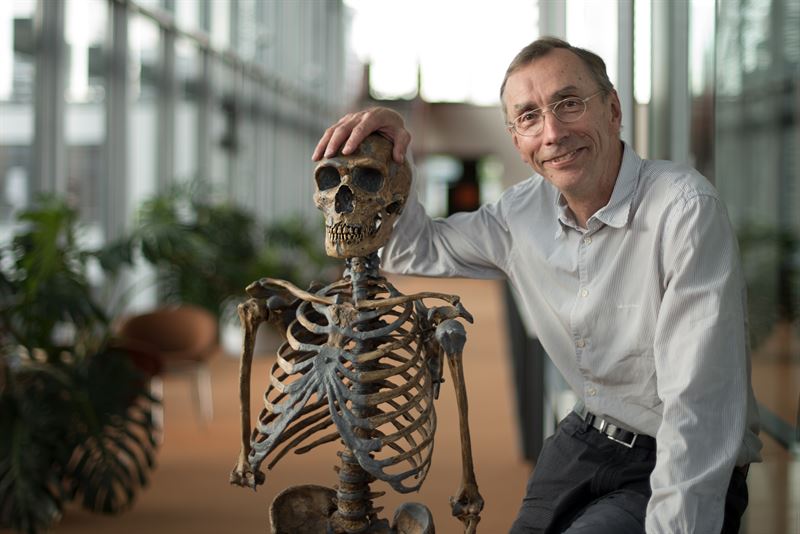The Nobel Prize in Physiology or Medicine was awarded to a single recipient on Monday: Svante Pääbo of the Max Planck Institute for Evolutionary Anthropology. Pääbo's work will be familiar to regular readers of these pages, as he was the driving force behind the completion of the Neanderthal and Denisovan genomes, and he has helped us understand how these lineages contributed to the genomes of modern humans. This has more to tell us about physiology and medicine than a casual glance might suggest.
Pääbo's central role in this story and his intense focus on this topic are likely to allow widespread acceptance of his sole-recipient status, despite the Nobels' long history of controversy over who gets acknowledged. But Pääbo also benefitted from being lucky enough to be in the right place at the right time, when a revolution in DNA sequencing technology provided the capabilities his ideas so sorely needed.
I briefly met Pääbo back in the 1990s when we were both working at Berkeley. He was already interested in old DNA and was working in one of the best labs for that sort of thing, run by the late Allan Wilson. PCR had been commercialized less than a decade earlier, and Wilson's lab was pushing the limits of the technique as a way of obtaining very old DNA that was a rare component of a sample that might have been in the environment for centuries or more—fragments of egg shells from the extinct moa birds made regular appearances in the lab at the time.
But this was the pre-genome era, and getting sequences from that DNA was a week-long affair that involved setting up thin polymer gels about the size of a small desk and days-long exposures of X-ray film, followed by tedious interpretation of the film by eye. People had done the math and had recognized that we'd need entirely new DNA sequencing technology in order to complete large genomes; they argued over what might work.
Pääbo and his collaborators couldn't have done what they ultimately accomplished if it weren't for the work of countless people who developed new generations of DNA sequencing machines. And he wouldn't have known what sequences to even look for if it weren't for the completion of the human genome. That's not to say that he and his collaborators didn't make major advances in methods that specifically pull out ancient human DNA sequences. But there was also luck involved in being interested in a problem where some of the technical hurdles that prevented progress were on the cusp of being overcome for unrelated reasons.
The list of Pääbo's accomplishments is extensive. His work was critical to building our first picture of the Neanderthals as a population, providing a sense of how many existed, where they migrated, and which populations interbred. He eventually followed that up with the entire nuclear genome of the Neanderthals, showing the many ways they differed from us—and that those differences weren’t enough to keep our ancestors from interbreeding.
The most shocking find, however, was that the Neanderthals had contemporaries besides us. We had no idea Denisovans existed, and we still know little of what they might have looked like. Yet we have their genome, and it clearly shows that they also interbed with our ancestors.
That nicely ties back to the category of this award, physiology or medicine. There’s an indication that the physiological adaptations that allow humans to thrive in the extreme altitudes of the Tibetan Plateau took place in Denisovans and got passed on to modern humans. Pääbo and his group have also identified a variety of changes that took place between Neanderthals and modern humans that may explain differences in everything from the number of neurons in certain brain regions to how we respond to some pathogens.
For instance, a 2016 study built on his work found that Neanderthals and Denisovans passed on three important genes involved in the innate immune responses of modern humans. The genes encode toll-like receptors, cell membrane-spanning proteins that can detect conserved, signature molecules of microbes and spur immune response—though the proteins are also linked to allergies.
Further, in 2018, Pääbo and colleagues published a high-coverage Neanderthal genome from remains found in a cave in Croatia. The data revealed a variety of gene variants that are present in modern-day humans, including some associated with plasma levels of LDL cholesterol and vitamin D, eating disorders, visceral fat accumulation, rheumatoid arthritis, schizophrenia, and the response to antipsychotic drugs. "This adds to mounting evidence that Neanderthal ancestry influences disease risk in present-day humans, particularly with respect to neurological, psychiatric, immunological, and dermatological phenotypes," Pääbo and his colleagues wrote. Though much more work is needed to fully understand the contribution of these genes, Pääbo's work laid the groundwork.
Working with ancient DNA has now become relatively commonplace, and many labs outside of Pääbo's are looking at extinct species all over the tree of life—we can now place mammoths and mastodons on the elephant family tree, to give just one example. It’s no exaggeration to say that it has revolutionized biology, giving us ways of answering questions that were impossible to ask previously.
But Pääbo was at the right place and time, with the right interests, to be a key part of the field from the start. And by choosing the most striking targets—ourselves and our closest relatives—he has captured the public’s imagination by telling us something about how we got here.


